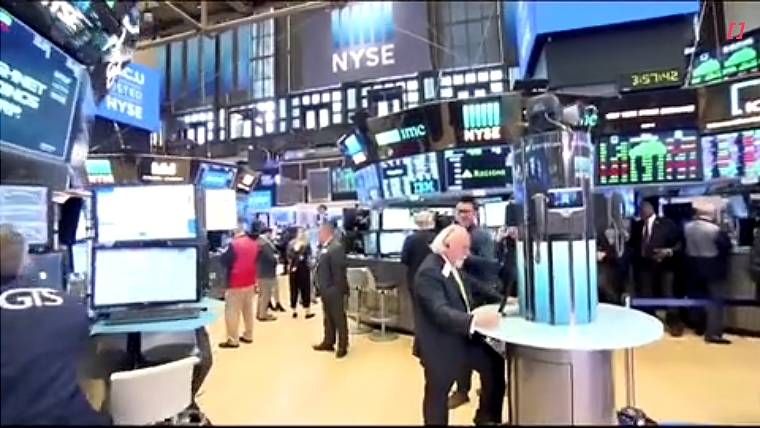
A stronger US ISM services report didn’t flinch the bond market, with traders paying more attention to the softer labour market reports. Lower rates across the board have helped boost US equities. The USD has grinded broadly higher throughout the day, and the NZD has underperformed, falling to 0.5840 and lower on all the key crosses.
US economic data were mixed, with labour market data weaker than expected but a stronger ISM services survey. ADP private payrolls rose 54k in August, below the 68k expected and 106k from July. Challenger and Co.’s survey showed hiring plans of 1494 jobs, their weakest August level in data dating back to 2009 while planned job cuts were around 86k, the largest August total since 2008, excluding the pandemic. Meanwhile, initial jobless claims rose 8k to 237k last week, its highest level since June.
The ISM services index rose 1.9pts to 52.0 in August, with business activity climbing to 55.0, a five-month high, and a near 6pt leap in new orders to 56.0, the strongest reading since October. The employment index was little changed at 46.5. The data were consistent with other releases showing a pick-up in growth in Q3 and the economy running stronger than expected.
The market put more weight on the softer labour market indicators, ahead of the key employment reports tonight, with the market positioning for confirmation of soft payrolls and a higher unemployment rate that will lock in a September rate cut, which is essentially fully priced. The 2-year Treasury yield is down 3bps for the day to 3.59%, while the 10-year rate is down 4bps to 4.18%, at the bottom end of its four-month trading range.
There will be as much interest in next week’s benchmark revisions for non-farm payrolls covering the year to March 2025. Wells Fargo believes the downward revision could be between 475k to 790k. The previous year’s downward revision was 598k.
NY Fed President Williams said his forecast is that it will become appropriate to cut interest rates over time, without clarifying the timing or pace of such moves. Cleveland Fed President Hammack, a non-voter, still doesn’t think cutting rates is appropriate, with “inflation is still too high, and we’re trending in the wrong direction”.
The latest news in the Governor Cook firing development is that the US Justice Department opened a criminal investigation into whether she committed mortgage fraud. Meanwhile, in prepared remarks ahead of his Senate hearing for confirmation, Fed Governor nominee Miran said “Independence of monetary policy is a critical element for its success…my opinions and decisions will be based on my analysis of the macroeconomy and what's best for its long-term stewardship”, comments designed to deflect criticism that he might just follow President Trump’s agenda for lower rates. However, under questioning he said he would consider returning to his White House job next year after concluding his short stint on the Fed Board.
Lower rates across the globe have supported equity markets. The S&P500 is currently up over ½%. The Euro Stoxx 600 index closed up 0.6%. China went against the grain, with the CSI300 index closing down 2.1% after Bloomberg reported regulators were considering a number of cooling measures as they grow concerned about the speed of the rally since the start of August.
In currency markets, the USD appreciated through the Asian trading session and has continued to grind higher overnight, unperturbed by the softer labour market reports, although GBP and EUR have put up some fight overnight, with only small changes. The NZD has underperformed for no obvious reason, falling to 0.5840 and down on all the key crosses. NZD/AUD has fallen to 0.8965, its lowest level since February. The NZD is down about ½% against EUR and GBP to 0.5015 and 0.4350 respectively.
Global forces drove down NZ rates yesterday, with NZGB yields down 2-6bps across the curve. Again, there was strong bidding interest at the weekly bond tender, with much more interest in the 5-year than 10-year bonds. The 10-year rate closed the day down 5bps to 4.43%. Swap rates were also lower, down 2-6bps, with a flattening bias.
The key economic release in the day ahead is the US employment report, a key risk event which could have a bearing on how markets trade through the rest of the month. The nonfarm payrolls print is widely seen as the only real hurdle getting in the way of a September rate cut by the Fed. The market sees payrolls rising 75k and the unemployment rate ticking up to 4.3%. Stronger employment and a lower unemployment rate would add some uncertainty about the rate decision and challenge market pricing, where a rate cut is almost fully priced. A weak print would lock in a rate cut as a done deal and, if it considerably weaker than expected, then the chance of a 50bps cut might well be priced.
Elsewhere, watch out for Japanese wage data and Canada’s employment report.

We welcome your comments below. If you are not already registered, please register to comment
Remember we welcome robust, respectful and insightful debate. We don't welcome abusive or defamatory comments and will de-register those repeatedly making such comments. Our current comment policy is here.